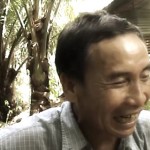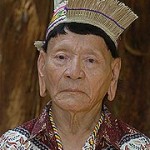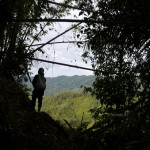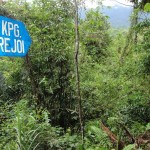With the Bengoh Dam completed and the inundation of the Sarawak Kiri River looming, the Bidayuh of Upper Bengoh faced the decision to either leave their homelands or stay.
Subtitle, Share and Remix
 Thanks to the folks at EngageMedia.org it’s now possible to subtitle Sarawak Gone in any of the languages supported by the Universal Subtitles initiative. How does it work? Best way to find out is to give it a go. Select any Sarawak Gone episode and click on the subtitle button. This will take to a step-by-step guide and all the tools you’ll need to add your captions into an open pool of others.
Thanks to the folks at EngageMedia.org it’s now possible to subtitle Sarawak Gone in any of the languages supported by the Universal Subtitles initiative. How does it work? Best way to find out is to give it a go. Select any Sarawak Gone episode and click on the subtitle button. This will take to a step-by-step guide and all the tools you’ll need to add your captions into an open pool of others.
Bird Man of Long Banga
 Actually, he’s a driver… a driver for hire, but still lives in the forest, or what’s left it it. We stopped to take tea on the way to Long Suit. I asked, “Are there sounds from the forest you no longer hear? Sounds you were familiar with that you just don’t hear any more?” He described a soundscape of birds, where they would make certain sounds and during which season.
Actually, he’s a driver… a driver for hire, but still lives in the forest, or what’s left it it. We stopped to take tea on the way to Long Suit. I asked, “Are there sounds from the forest you no longer hear? Sounds you were familiar with that you just don’t hear any more?” He described a soundscape of birds, where they would make certain sounds and during which season.
Sarawak Gone – 30 minute version
The full 30 minute version of Sarawak Gone – The Bidayuh and the Dam. The Bidayuh, one of more than 40 sub-ethnic groups in Sarawak, face threats to their livelihood, traditional lands and culture with the development of the controversial Bengoh Dam.
Photo finish
Explore the entire collection of stills from the series, from its inception to completion.
International debut at AGITPROP
From 2 – 4 July AGITPROP film festival goes live for the first time in Manila, Philippines. Sarawak Gone will debut there.
The Sape Master
Seven generations of music are said to be held by a Sape Master living in the Bakun Dam resettlement scheme, 180km southeast of Bintulu.
The Sape is one of the more well known traditional instruments of Sarawak, but few remain who can perform the music of former generations and in the style that represents that heritage.
Series completed, but it ain’t over yet
 There’s a kind of anti-climax when one gets to the end of a project, but not this one. Despite completing the last official episode of this series, it’s far from over.
There’s a kind of anti-climax when one gets to the end of a project, but not this one. Despite completing the last official episode of this series, it’s far from over.
As I write The Headman is gradually populating personal walls on Facebook, various blogs and websites in a bid to keep the issues it raises not only in public view, but that we remember the legacy left by Kelesau Naan who disappeared this week, three years ago.
Kelesau was known to have described the Penan as “mushrooms of the forest”. This statement resonates with a deep and profound knowledge of the connectedness of all things. As mushrooms grow from spore beneath the surface of the soil, so too do humans grow, feed and thrive from the forest floor to the canopies that protect them.
I learnt a great deal during my brief stay in Long Kerong. The Penan take nothing for-granted. Their needs are simple by our standards, but their way of life is immeasurably rich. For those that have seen life beyond the forest, they say this world robs them of their independence and way of life. That’s not to say they’re entirely against development. It wouldn’t take much to improve their standard of living. Solar power for lighting and refrigeration, improved and frequent access to health services and teachers that aren’t afraid to venture into and live amongst these people in the forests. But remove the Penan from the forest, both the people and tong tana, the closest term the Penan have for forest, will suffer.
Ethnocide
What we are witnessing with the removal of indigenous peoples from their customary lands is ethnocide. The anthropologist David Maybury-Lewis describes this as “the destruction of a people’s way of life” and notes that it’s considered acceptable and “appropriate” policy by the Malaysian government.
It takes only a single generation for entire communities to be denuded of their traditional knowledge, customs and way of life. I’ve seen it. In 20 years of work in Sarawak, supporting the efforts of my colleagues there, travelling to far flung communities and seeing the despair in the faces of elderly Dayaks, the loss to them and us is immeasurable.
Since 1999, when I started shooting there, over 20% of the remaining 25% of native rainforests I’d flown over, driven through or traced on maps has been torn out, leaving the forest to the scourge of palm oil where nothing but rats and snake survive. The rattan, forest foods and medicines, impossible to comprehend volume of species, both flora and fauna, and as ethnobotanist Wade Davis laments, a unique vision of life is being lost forever.
The prognosis may be dire, but I can only hope and persist in my work and support that of my colleagues, that it may not be as tragic as it seems today.
The Headman
The Headman in post-production
 The next Sarawak Gone series, The Headman, is finally in post-production. It was shot in and around the Penan village, Long Kerong, located in the Ulu Baram. It was to be one of the more significant journeys I had made and certainly one that imprinted a deeper connection with Sarawak’s forest communities, and indeed the forest itself.
The next Sarawak Gone series, The Headman, is finally in post-production. It was shot in and around the Penan village, Long Kerong, located in the Ulu Baram. It was to be one of the more significant journeys I had made and certainly one that imprinted a deeper connection with Sarawak’s forest communities, and indeed the forest itself.
The Headman is inspired by Kelesau Naan, the former Headman of Long Kerong, allegedly murdered whilst hunting with his wife in October 2007. His remains were found two months later, spread across a river-bed where it was known he had been headed on the day he went missing.
This series traces the life of Kelesau Naan through his son, Nick Kelesau, and the village and forests he had long fought to protect leading to the tragic circumstances of his disappearance.
I’m planning to have at least the first key episode completed by October 23, three years to the day Kelesau is said to have lost his life.


